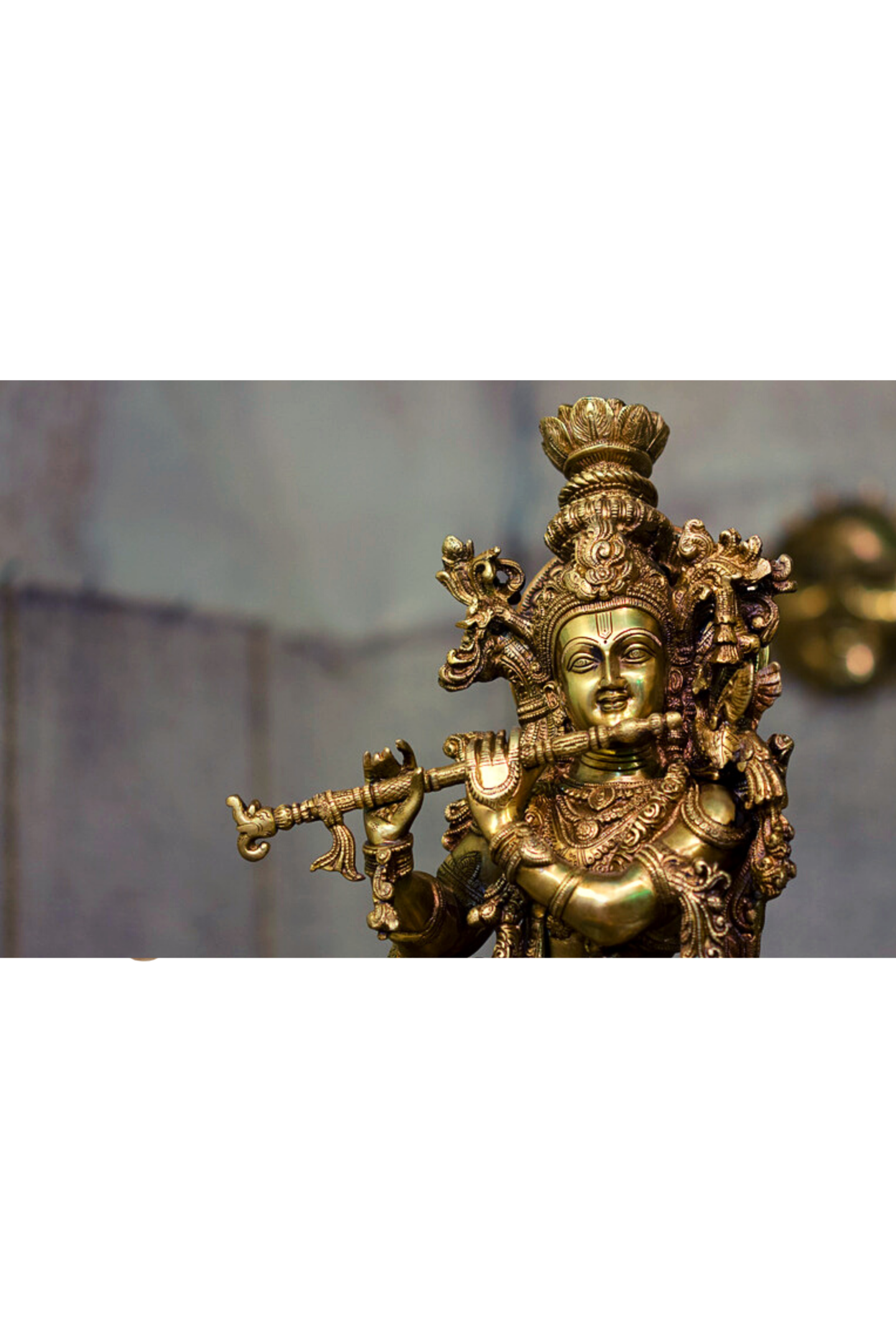The flute is one of the most beloved companion of Krishna, the supreme personality of Godhead. It’s difficult to imagine Krishna without His flute.
Why’s that?
Although there are different types of flutes, such as bansuri, vamsi, and murali, but they all give us some common profound lessons in devotional life.
🕳️ The Holes in the Flute 🕳️
One of the most important features of the flute is that it has holes in its body. These holes are not defects, but qualities.
The holes of flute signify the austerities and sacrifices that the flute has undergone to become fit for Krishna’s service. The flute was once a bamboo, but it had to endure the pain of being cut, hollowed and pierced by hot metal to become a musical instrument.
Similarly, a devotee has to undergo various difficulties and challenges in the path of bhakti. These difficulties are not obstacles, but opportunities.
They purify the devotee’s heart and mind from material attachments and selfish desires. They also increase the devotee’s dependence on Krishna and His mercy. Only by facing these difficulties with patience and faith can a devotee attain Krishna’s association.
The holes in the flute also produce different notes or surs when Krishna blows into it. There are seven main notes: sa, re, ga, ma, pa, dha and ni. These notes represent the different emotions and moods that Krishna expresses through His flute.
The notes can be short or long, depending on the size of the holes. The short notes signify fine and happy and naughty emotions of Krishna and the long notes signify even much finer and sad and romantic emotions of Krishna. A devotee should learn to appreciate the variety and beauty of Krishna’s flute music.
## 🎋 The Making of the Flute 🎋
Another important feature of the flute is how it is made. The flute is made from a bamboo that is carefully selected to make a perfect flute for Krishna. The craftsman cuts the bamboo from its roots, removes its branches and leaves, hollows out its core and makes holes in its body.
The making of the flute is a symbolic process of transformation from a material entity to a spiritual entity.
- – The bamboo represents the conditioned soul who is bound by material nature and karma.
- – The cutting of the bamboo represents the detachment from worldly attachments and false ego.
- – The removal of the branches and leaves represents the renunciation of unnecessary activities and distractions.
- – The hollowing out of the core represents the emptying of one’s mind from material thoughts and desires.
- – The making of the holes represents the acceptance of difficulties and hardships as part of one’s purification.
The craftsman represents the spiritual master or guru who guides and instructs the disciple on how to become a pure devotee of Krishna. The guru knows how to mold and shape the disciple according to Krishna’s will and pleasure. The guru also knows how to protect and preserve the disciple from harm and danger.
The bamboo does not resist or complain when it is being made into a flute. It surrenders itself completely and feels happy that it has been chosen for such a noble purpose. It does not envy or compete with other bamboos who remain in their original state. It also inspires other bamboos who aspire to become flutes for Krishna.
## 🍯 The Nectar in the Flute 🍯
The flute contains divine nectar that comes from Krishna’s lips and breath. This nectar fills up the holes in the flute and makes it vibrate with ecstasy. This nectar also flows out from the flute and reaches the ears and hearts of those who hear it.
The nectar in the flute represents the love and grace that Krishna bestows on His devotees who serve Him sincerely and selflessly.
The nectar in the flute also represents the bliss and joy that a devotee experiences when he is connected with Krishna which is not temporary, but eternal.
👉In essence, Krishna plays flute to attract the hearts of His devotees and to express His love for them.The flute is also a metaphor for the devotee’s life and attitude.
